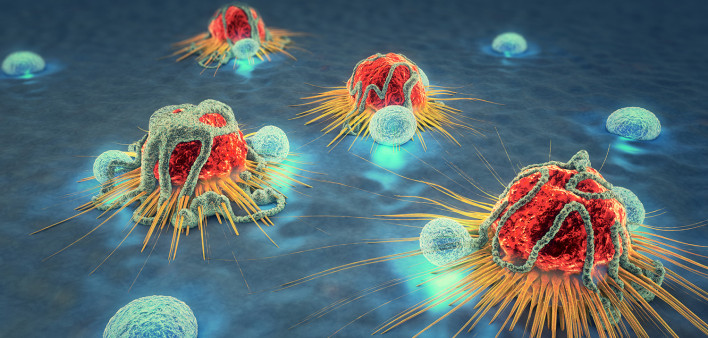
A sarcoma is a rare kind of cancer. Sarcomas are different from the much more common carcinomas because they happen in a different kind of tissue. Sarcomas grow in connective tissue – cells that connect or support other kinds of tissue in your body. Although there are more than 50 types of sarcoma, they can be grouped into two main kinds: soft tissue sarcoma and bone sarcoma.
Soft Tissue Sarcoma

Soft tissue sarcoma forms in the tissues that connect, support and surround other body structures. This includes muscle, fat, blood vessels, nerves, tendons and the lining of your joints. More than 50 subtypes of soft tissue sarcoma exist. Some types are more likely to affect children, while others affect mostly adults. These tumours can be difficult to diagnose because they may be mistaken for many other types of growths.
They can be found in any part of the body. Most of them start in the arms or legs. They can also be found in the trunk, head and neck area, internal organs, and the area in the back of the abdominal (belly) cavity (known as the retroperitoneum).
Bone Sarcoma or Osteosarcoma

Osteosarcoma (also called osteogenic sarcoma) is the most common primary bone cancer. It starts in the bone cells. It most often occurs in young people between the ages of 10 and 30, but about 10% of osteosarcoma cases develop in people in their 60s and 70s. It’s rare in middle-aged people and is more common in males than females. These tumours develop most often in bones of the arms, legs, or pelvis.
SYMPTOMS

Soft Tissue Sarcoma
Soft tissue sarcomas are hard to spot because they can grow anywhere in your body. Most often, the first sign is a painless lump. As the lump gets bigger, it might press against nerves or muscles and make you uncomfortable or give you trouble breathing, or both. There are no tests that can find these tumours before they cause symptoms that you notice.
Bone Sarcoma
In the case of bone sarcoma, the first sign may be a pain, with or without a lump. It often affects the long bones in the arm or leg or the pelvis. If it affects the pelvis, signs and symptoms may not appear until a later stage.
Osteosarcoma can show obvious early symptoms, including:
Pain off and on in the affected bone, which may be worse at night
Swelling, which often starts weeks after the pain
A limp, if the sarcoma is in your leg
CAUSES AND RISK FACTORS

It’s not clear what causes most sarcomas. In general, cancer forms when changes (mutations) happen in the DNA within cells. The DNA inside a cell is packaged into a large number of individual genes, each of which contains a set of instructions telling the cell what functions to perform, as well as how to grow and divide.
Mutations might tell cells to grow and divide uncontrollably and to continue living when normal cells would die. If this happens, the accumulating abnormal cells can form a tumour. Cells can break away and spread (metastasize) to other parts of the body.
Risk factors
Factors that may increase your risk of sarcoma include:
Inherited syndromes. A risk of soft tissue sarcoma can be inherited from your parents. Genetic syndromes that increase your risk include hereditary retinoblastoma, Li-Fraumeni syndrome, familial adenomatous polyposis, neurofibromatosis, tuberous sclerosis and Werner syndrome.
Chemical exposure. Being exposed to certain chemicals, such as herbicides, arsenic and dioxin, may increase the risk of soft tissue sarcomas.
Radiation exposure. Previous radiation treatment for other cancers can increase the risk of soft tissue sarcomas.
Treatment

A doctor may suggest one or more of the following treatment options for bone or soft tissue sarcoma.
Surgery
Radiation Therapy
Chemotherapy
Targeted Drug Treatment
The choice and intensity of the treatment depend on the stage and grade of cancer, the size of the tumour, and the extent of any spread.
About The Author
Pavtan Food Products have been made after years of scientific research based on Ayurveda and Medical Science.
Our ‘Cancer Care Aata’ has proved to be an ayurvedic gift to cancer patients, thousands of them have benefitted from it. The major ingredients include Raj Gira, Singhada, Savva, Kattu and Moong which help in curing cancer and preventing the cancer cells to grow further.
To know more, click here https://www.pavtan.com/pavtan-cancer-care-aata
